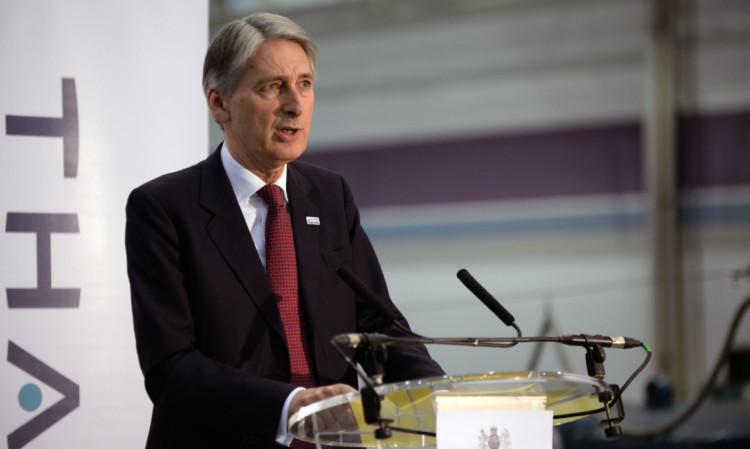UK Defence Secretary Philip Hammond has warned that large parts of an independent Scotland’s airspace would be left “undefended” under SNP plans.
He claimed the country would only have access to four Typhoon jets at any given time which would be insufficient to protect the country’s skies.
The Conservative MP said the Scottish Government’s plans, which will see fast jets based at RAF Lossiemouth in Moray, amounted to a “totally irresponsible proposition”.
According to the Scottish Government’s white paper on independence, the country’s annual defence budget would be £2.5 billion and “a Quick Reaction Alert Squadron, incorporating a minimum of 12 Typhoon jets based at Lossiemouth”.
It stated: “Lossiemouth will continue to be a main operating base for fast jet aircraft and Scotland’s air policing capability.”
Speaking in Glasgow, Mr Hammond said: “Anyone who knows anything about modern defence will tell you that owning 12 jets does not mean you have 12 jets available to deploy.
“Even in a fleet as efficient as the RAF’s, roughly a third of the force will be in deep maintenance and only a third will be at full readiness.
“So even on the assumption that a Scottish air force could achieve the same levels of efficiency in maintenance and aircraft servicing as the RAF, the number of jets they could deploy at any one time is just four.
“Just four to defend and protect the whole of Scotland’s skies and air approaches which represents a huge proportion of the UK’s current area of responsibility.”
Mr Hammond said there was no mention of air-to-air refuelling capability in the white paper which was necessary to enable fast jets to fly “well over the North Atlantic and the Irish Sea”.
“So in fast air, at least, we have a policy proposition that falls apart at the first scrutiny, revealing that in practical terms large parts of Scotland’s airspace would be undefended,” he added.
“That, to me, is a totally irresponsible proposition.”
